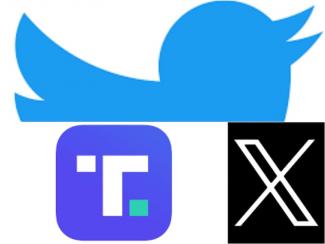Musk, Trump and the Future of Free Speech on Social Media
The debate over free expression on social media today straddles politics, technology, and civil liberties. When Elon Musk completed his $44 billion acquisition of Twitter on October 27–28, 2022, he declared his ambition to transform the platform into a global forum for candid discussion. One of his earliest and most controversial actions was restoring the account of former U.S. President Donald Trump, who had been permanently banned in January 2021 following the Capitol riots.
These moves sparked intense global discussions, often polarizing, about whether social media should be an unrestricted platform or one moderated with accountability. Observing from India, where social media serves as both a democratic instrument and a source of political conflict, it becomes clear that striking the right balance between freedom and accountability is crucial, particularly when platforms operate across borders.
Musk’s Takeover of Twitter (Now X)
Musk framed his purchase as a defense of free speech. Many conservatives, particularly in the U.S., saw it as a correction to what they viewed as Silicon Valley’s bias. Under his leadership, previously banned accounts were reinstated, and several content moderation rules were scrapped. Musk often called himself a “free speech absolutist,” arguing that all viewpoints, however divisive, should be heard.
Yet the reality has been more complicated. Within months of his takeover, watchdog groups recorded a rise in hate speech, harassment, and misinformation. Musk insisted that transparency and openness were preferable to censorship, even open-sourcing parts of the algorithm in 2023. Still, the platform’s ability to sustain constructive dialogue came under strain. The paradox is stark: can free expression truly thrive if toxic ones drown out vulnerable voices? Does dialogue without moderation empower democratic debate—or the most destructive voices?
Trump and the Politics of Deplatforming
The decision to ban Trump in January 2021, following the Capitol Hill incident, remains one of the most dramatic examples of a private technology company taking a political stand. Supporters argued it was necessary for public safety; critics countered that unelected tech executives should not wield such authority over elected leaders.
When Musk ran a public poll in November 2022 and subsequently reinstated Trump, the divide re-emerged. Critics warned of normalizing rhetoric linked to violence, while supporters hailed it as a win for free speech.
Following his permanent suspension from Twitter in 2021, Trump launched his own platform, Truth Social, in February 2022. Marketed as a “free speech” alternative to Big Tech censorship, it became a niche space for Trump supporters but struggled to draw broader audiences. Its existence highlights a growing reality: when figures are banned from major platforms, they rarely disappear; instead, they migrate to parallel digital spaces, often deepening polarization and creating echo chambers with little accountability.
This episode underscores a core dilemma: social media platforms are no longer just private companies but de facto public squares with real-world consequences. Leaders’ words online ripple into offline institutions, behaviors, and security. Deplatforming Trump was not just a corporate decision it was a democratic one. Yet leaving him online without safeguards also carries risks. Neither option is clean or cost-free.
Global Challenge
The notion of “free speech” is not uniform worldwide. In the U.S., the First Amendment protects almost all forms of expression. Europe enforces stricter hate speech laws. In India, where this commentary is written, freedom of speech is a fundamental right under Article 19(1)(a), but subject to “reasonable restrictions” linked to public order, defamation, morality, and national security.
Global platforms often adopt a U.S.-centric model of free expression, which can clash with local laws or social norms. At the same time, yielding too readily to government demands, especially in countries with weaker democratic institutions, risks making platforms tools of censorship and surveillance. This tension is visible in India too: platforms face growing pressure from the state to curb dissent while also being criticized for enabling disinformation and communal polarization.
Role of Corporate Power
A less discussed but equally critical factor is the role of algorithms. Engagement-driven systems prioritize sensational, controversial, or extreme content, often at the expense of nuance. This tilts public discourse toward outrage.
Musk promised greater algorithmic transparency in 2023, allowing users to view and even adjust how content is ranked. Yet the extent of genuine user control remains limited. Ultimately, the governance of digital speech cannot rest solely on the vision of one man, no matter how influential. With social media now central to democratic life, questions of ownership and accountability become inseparable from civic responsibility.
Toward Balanced Digital Governance
The path forward need not be extreme. Platforms should neither censor every unpopular view nor permit total anarchy. Instead, what is needed is a governance framework built on:
- Transparency in moderation decisions
- Consistency in applying rules across ideologies
- Independent oversight, especially for powerful accounts
- Respect for global diversity while aligning with local democratic standards
- User empowerment, through tools to control visibility, report abuse, and understand platform choices
Conclusion
Social media platforms like Twitter (X) are double-edged. They democratize access to information and mobilize global movements, but they also polarize societies and destabilize democracies. Both Elon Musk and Donald Trump symbolize two sides of the free speech battle: one as an owner reshaping governance, the other as a political actor testing its boundaries. Their stories remind us that in the digital age, free expression is not only about liberty but also about accountability, structure, and the health of democracy.
The challenge ahead is not to decide between silencing and permissiveness, but to create digital ecosystems where freedom and fairness can co-exist. That, ultimately, is the real test for the future of social media.
